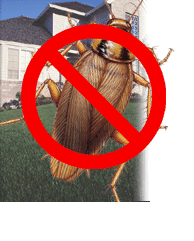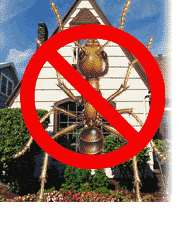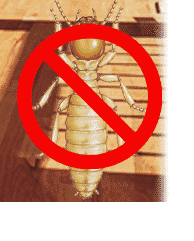

Bug Menu
click below for info
|
Mites |
Silverfish |
|
Pill Bugs |
Spiders |
|
Termites |
 Ticks |
 Moths |
Grain Beetles |
 House Flies |
Wasps & Hornets |
 Mosqitoes |
Scorpions |
Food for thought...
You may be a do-it-yourselfer, and good at whatever you undertake. While you could well have success controlling pests around your house, you need to decide whether it's worth your time, energy, and money. We'd like to offer you some important considerations on the subject.
Some People think that "pest control" is an oxymoron.
Did you know that one cockroach can lay as many as 200 eggs in its three-month lifetime? Or that there could be upwards of a million termites in one colony? For many homeowners, controlling pests is a constant battle, one where it's often hard to tell who's winning. It's a major reason why, in the war against bugs, you should go into battle with an ally who's armed with extensive knowledge and expertise. Your neighborhood pest management professional.
So many Bugs, so little time.
Many homeowners decide to give home pest control a try for themselves. They figure, after finding a pest infestation, they can purchase the right product and spend some time applying it in and around the house with effective results. It all sounds reasonable, but it’s really not that easy.
A quality application takes time. Simply reading the label to ensure proper mixing and application techniques are used can be quite time-consuming. And the actual product application itself can be tedious and cumbersome. Using the correct equipment and preparing your home adequately are just part of the procedure. Locating where pests live and hide, and delivering the product to those areas are key components to effective control. This includes poking around in some of the most undesirable places for humans: bath traps, attics, drains, under sinks, crawl spaces. All dark and moist, and often hard to get to. The battle can be an endless game of hide-and-seek, and your time is precious. Yes, you want to make your home a safer place, but you also want to make time for your family, and for the general pleasures of life. You might save a little money trying to control pests yourself but, to do it properly, you need to weigh the amount of time it’s going to take to really get the results you want: dead bugs and consistently effective pest control. After weighing all the options, the answer for many homeowners like you is to work with a professional pest management professional (PMP).
Using a PMP's time and expertise.
We can't deny that using a PMP for your pest problem will probably cost you more than attempting to do it yourself. But, remember what you're buying. A wealth of knowledge and experience dealing with bugs of all types, in all kinds of situations. And a person who will spend the time necessary to assure that you're winning the battle of the bugs, and that "pest control" is not an oxymoron.
We suggest you find out more information for yourself. Contact us, and get the details on exactly what can be done for your situation, and for exactly how much.
 |
The Cockroach: Older than a Dinosaur, and much meaner... Did you realize that cockroaches, in pretty much the same form you see today, have roamed the world for more than 400 million years? Now, that's the epitome of the ultimate survivor. It probably wouldn't surprise you, then, that roaches can be difficult to find and control.
|

|
To say an ant has a family; Is like saying the ocean has water... An ant, regardless of species, has thousands of siblings. Where there's one, there are many. Ants, in fact, are regarded as the number one residential pest in America, infesting your home, and being a year-round nuisance. To gain control, you have to disable the entire colony, not an easy do-it-yourself job.
|

|
They'll eat you out of house & home: (not your kids...) Termites !!! The fact is, termites infest more than 600,000 homes each and every year, causing more damage than fires, storms or earthquakes — an estimated $2 billion in the United States alone. How can you make sure your home doesn't become a statistic? By being proactive and establishing an ongoing maintenance program with a professional pest management provider.
|

|
|

|
|